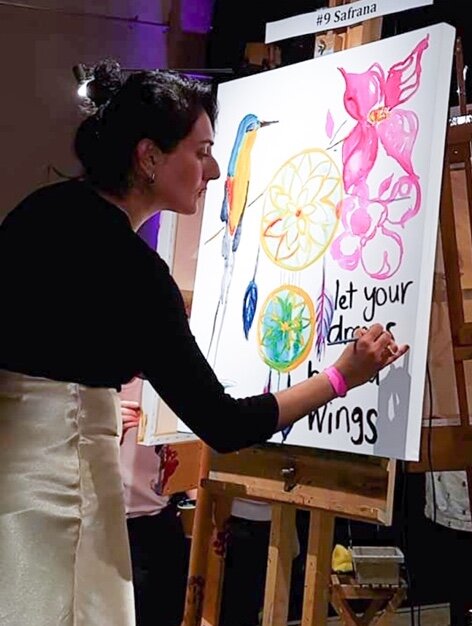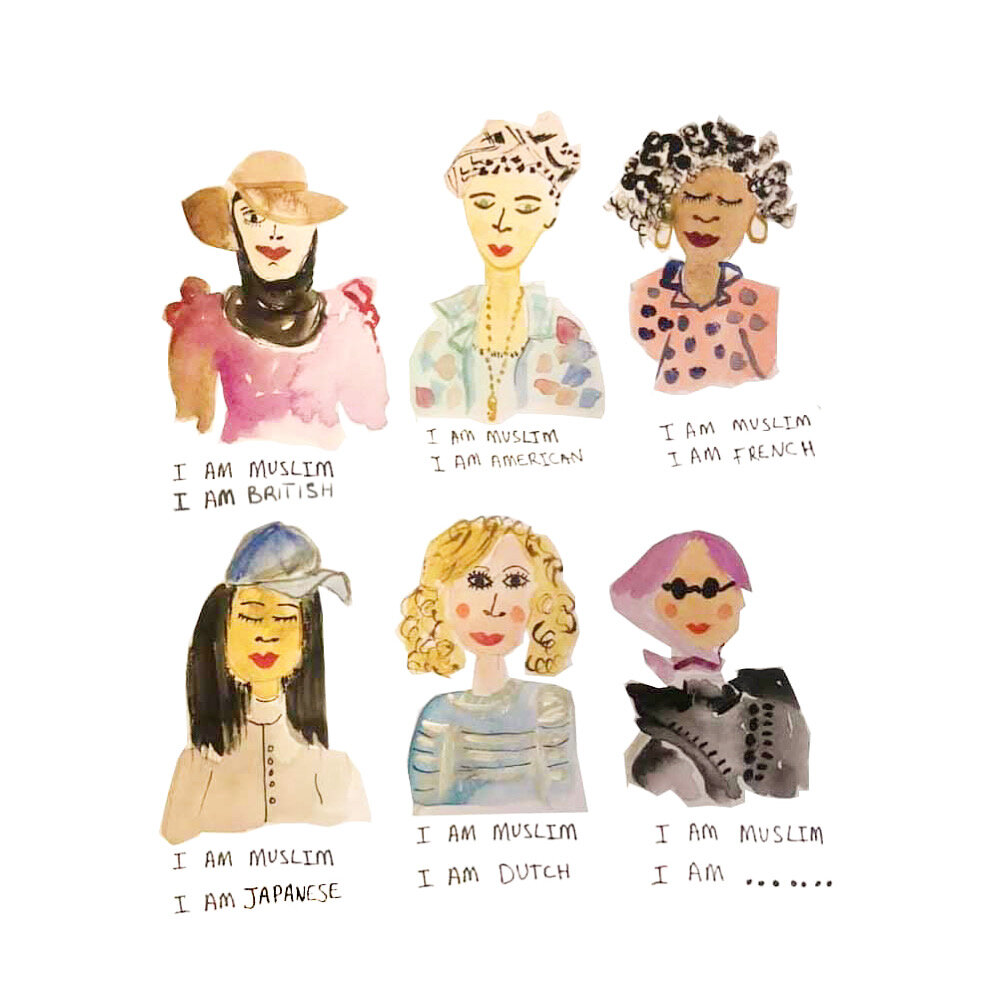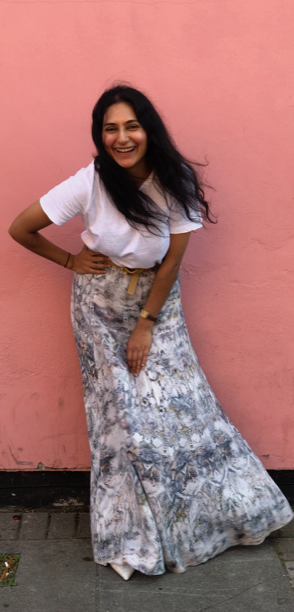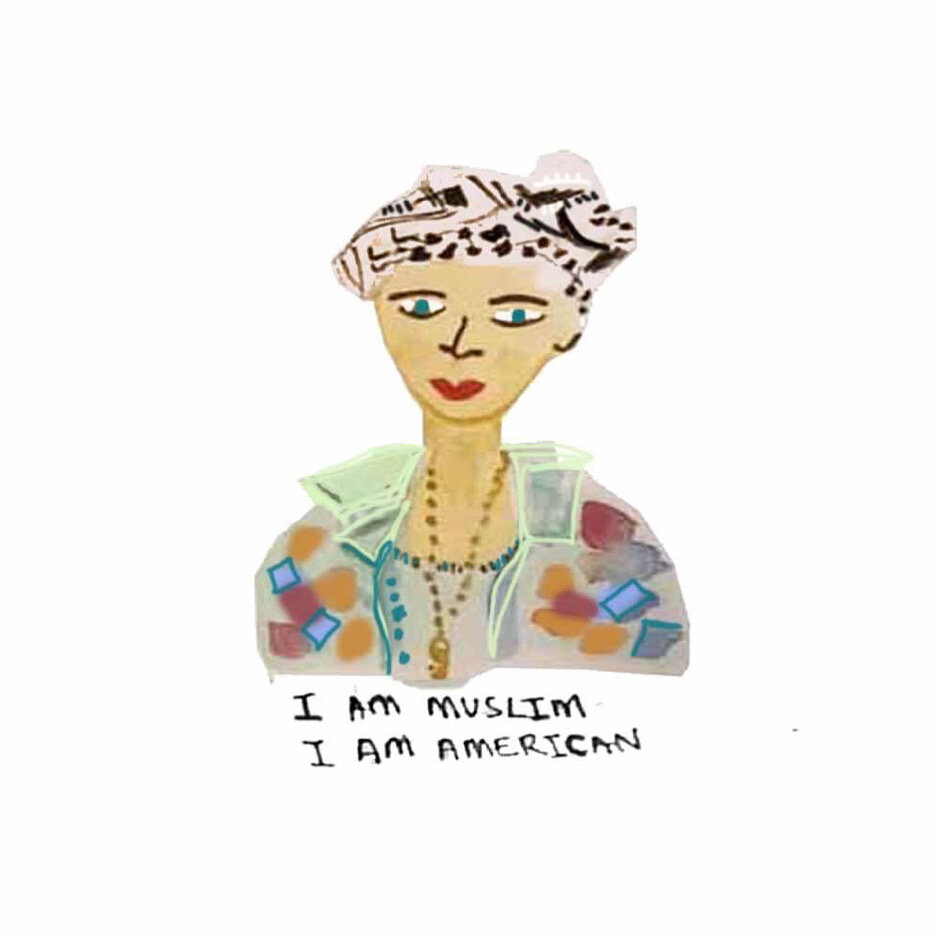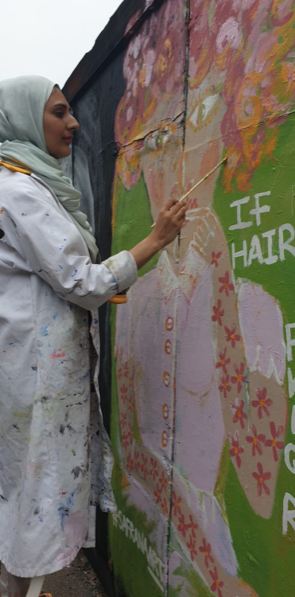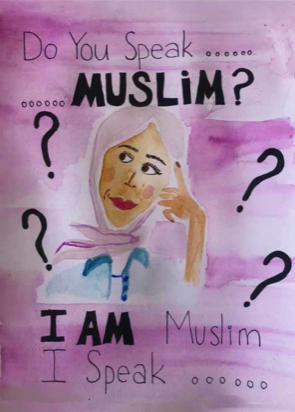Safrana - the Artist
Interviewed by Kulsum Hafeji
Artist: @safrana.art
1. Tell me a little bit about yourself, where are you from? What was your childhood like?
Well, I’m Safrana and the first thing people say when they hear my name is that it’s a ‘unique’ name and “what does it mean?” Honestly, I don’t have a clue. It’s just a name.
But, I think it originates from the word safar - A journey; travel; an Arabic word for saffron; azafrán. Then it gets really confusing because they think I’m Arabic, I’m not. I'm Indian. I am from England, born and raised. It gets even more tricky because they say, “but your Indian and Muslim?”. Fortunately, I love to travel so I don’t mind the curiosity of people. I think it’s a good way to educate and open discussions. I try to do this in my work too.
2. Why did you decide to become an artist?
I love painting and drawing and if I can make a living out of it then allhamdulillah.
3. How did your journey into art begin? Were you supported by friends and family?
I think I’ve always been into art, making patterns and using different materials. I started art at school during A-levels and later went to college to study art. After that, I then went into printed textiles at university. Luckily, my family have always been supportive of my creative endeavours, as they come along to exhibitions that showcase my art.
4. Walk us through your art, what would you say your style is? And what message do you aim to convey through your work? And Why?
Being surrounded by floral wallpaper, floral carpet and soft furnishings growing up, I think it must have subconsciously influenced my art because I love painting flowers. I like bright colours and so I mainly use watercolour, gouache and paint. Although, I am looking to digitalise more of my work to explore it in different mediums.
Recently, I’ve been working on issues relating to female empowerment, ideas of strong women in Islam and talking about the controversy of body hair. I find it to be such a huge topic for Indian girls.
Artist: @safrana.art
Why is the removal of body hair validated so much? Why are we all so preoccupied with a bit of hair on our arms? I hope to do more and just draw attention to diversity and feel represented.
The other issue I’ve always thought was so obvious yet seems strange to others, is that being Muslim also means you can be from any country, and speak any language and be of any skin colour. Being British Indian and growing up with Gujurati speaking parents, I speak Gujurati and English.
5. What artists have inspired you in your work?
In terms of inspiration, I look at different artists for different things - growing up I just loved the impressionists because of their use of colour. Then, I began to admire Picasso and his story of why his work changed so much and why he tried different mediums and ways to paint- he just didn’t feel like he was good enough. The struggle of an artist. More recently, I have been looking at a lot of Mughal art and Indian patterns. I love the intricate layers of patterns and the deep colours. I look at buildings and nature and colour is a big thing for me. I also just love discovering new artists online. Here are a few Instagram handles to just name a few:
All of them are doing some amazing progressive work!
6. What has been the most successful moment in your art career?
Goodness! Most successful?! In truth, I don't know. I think any day I get to do art and paint is a success. But I think if my art makes someone smile or think, then that’s a success in my book.
7. What has been the most difficult moment in your career?
Pursuing art was a difficult choice. Sometimes, I wish my parents were more traditional and fit the stereotype of Indians parents who say, “go be a Doctor”, but here we are.
8. Where would you like to see yourself in the future?
In the future, I would love to be able to paint more murals, illustrate books and articles for magazines, inshAllah!
Side note - I recently came across an online book seller called, ‘mirror me write’ who sells independently published writers. Writing about issues for minorities and underrepresented people. Also, addressing issues that people sometimes in BAME societies find hard to talk about.
9. What advice would you give to future girls from BAME backgrounds who want to go into art but are afraid there's no future?
There is a future in anything that you work hard for and put in the hours for. Nothing can be achieved without hard work. I mean it’s simple. Also, don’t be shy - tell the world about your work and put yourself out there. Show what you can do! You never know who is watching or who needs an artist like you.
10 months on, Safrana Musa now lives in Manchester where she currently paints murals and is about to launch her own stationary. You can purchase some of her work here and see more of her artwork on Instagram - @safrana.art.


